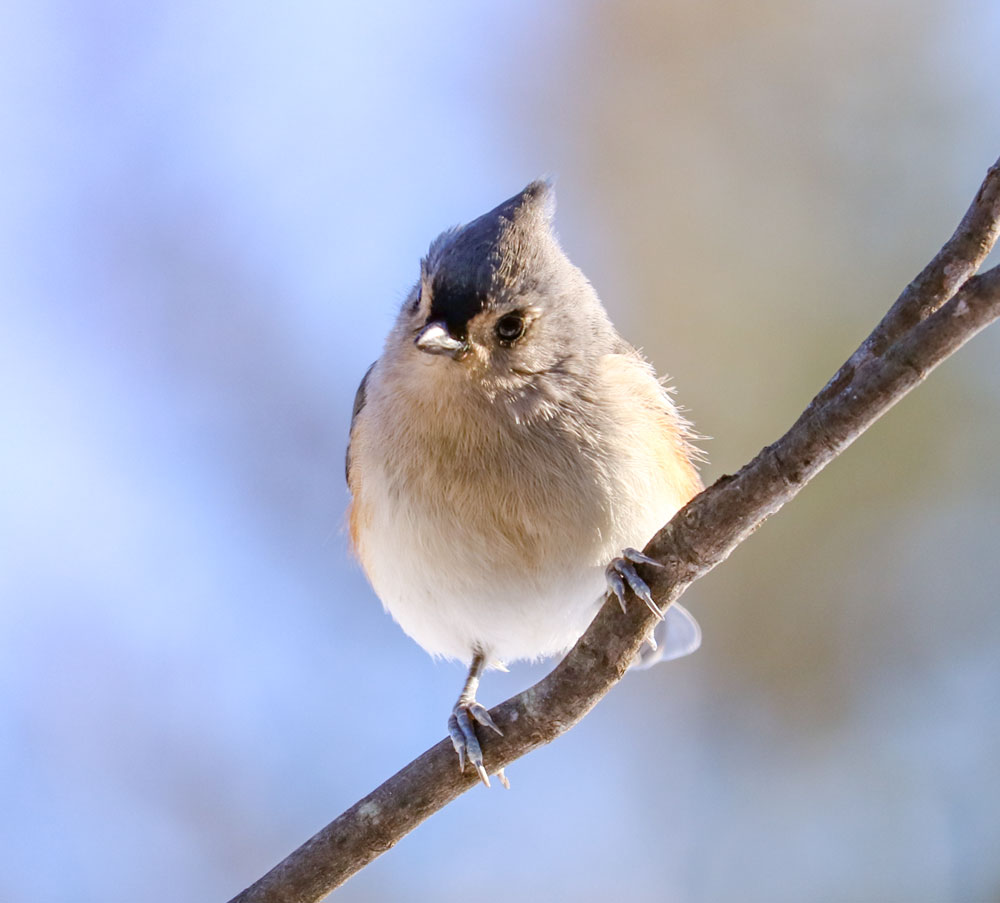
A petite grayish-colored bird with expressive and large doll-like eyes, a short beak, and an elegant crest give these birds a quiet but eager expression. The tufted titmouse Baeolophus bicolor is a small North American songbird, a species in the tit and chickadee family Paridae. Its genus name Baeolophus hails from two Greek words for “small” and “crest” and bicolor means two-colored. Where does the word “titmouse” come from anyway? The name originates from the Anglo-Saxon root words – “tit,” a word meaning something small. And “mouse,” from a word applied to any small bird, as well as a little rodent. All five titmice species in this genus are found only in North America.
While observing these birds, I found them to be as bold and fearless as the black-capped chickadees in their behavior, especially at my feeders. These birds are acrobatic, methodical in their choice of food sources, and overall quite amusing to watch. You will find this familiar bird feeder visitor often joins mixed foraging flocks with other common backyard birds such as the white-breasted nuthatch and black-capped chickadee.
I would like to share a few interesting facts about the tufted titmouse as well as a few photographs that I have taken of this delightful bird.
Tufted Titmouse Facts

Tufted Titmouse Symbolism
It is said that the tufted titmice are symbols of good luck if seen by chance in a dream or vision. Your breakthrough is just around the corner. If you’ve been struggling for years, this spirit animal appearing on your radar is letting you know that your life is about to change completely. Moreover, their meaning represents living in the present moment. If this bird visits you, it asks you to step away from the past and to worry less about the future.
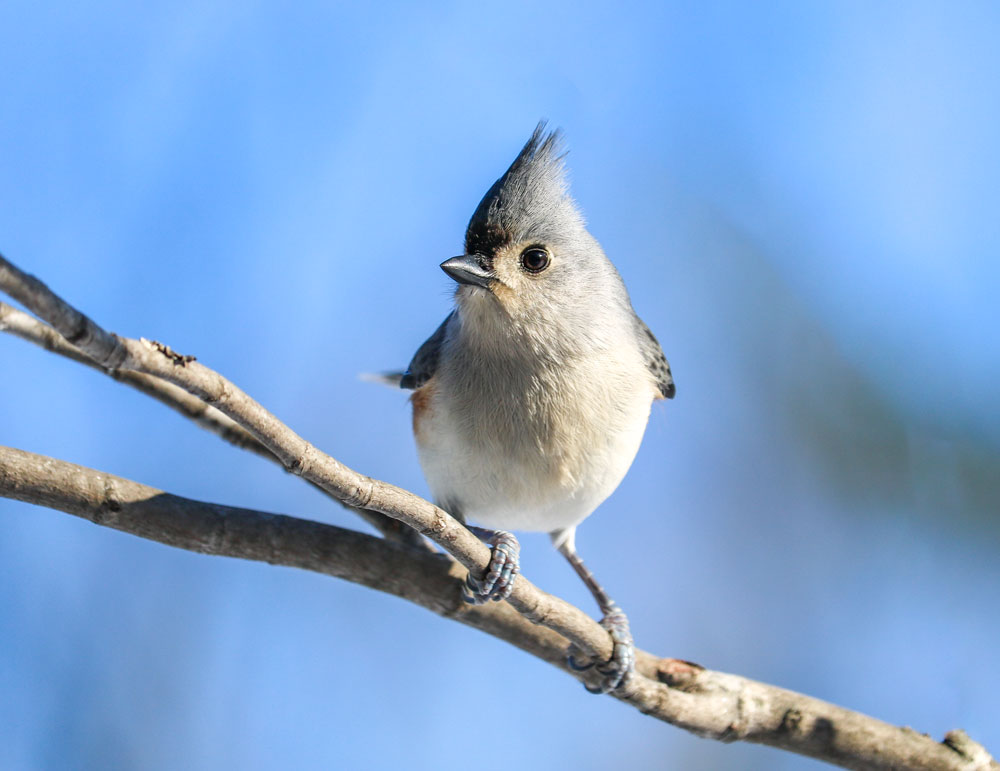
Appearance
Rarely measuring more than six inches long, tufted titmice are considered somewhat large among the small birds that come to feeders, an impression that comes from their large heads and eyes, thick necks, and full-bodied. Their pointed crest and stout beak help identify titmice even in silhouette.
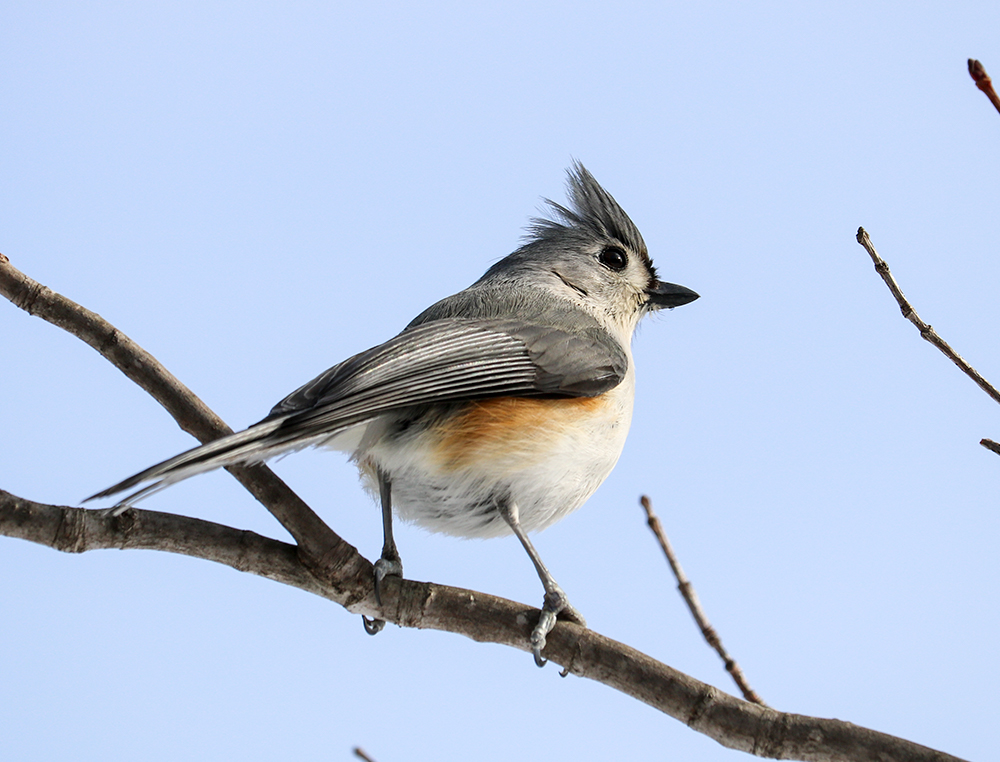
Males and females are similar in plumage with the males tending to be larger in size than the females. They are a soft silvery gray above and white below, with a rusty or peach-colored wash down the flanks. Their large eyes are surrounded by a white ring that reaches their beak. A black patch located just above the beak makes the bird look snub-nosed. In juveniles, the black forehead is greatly diminished.
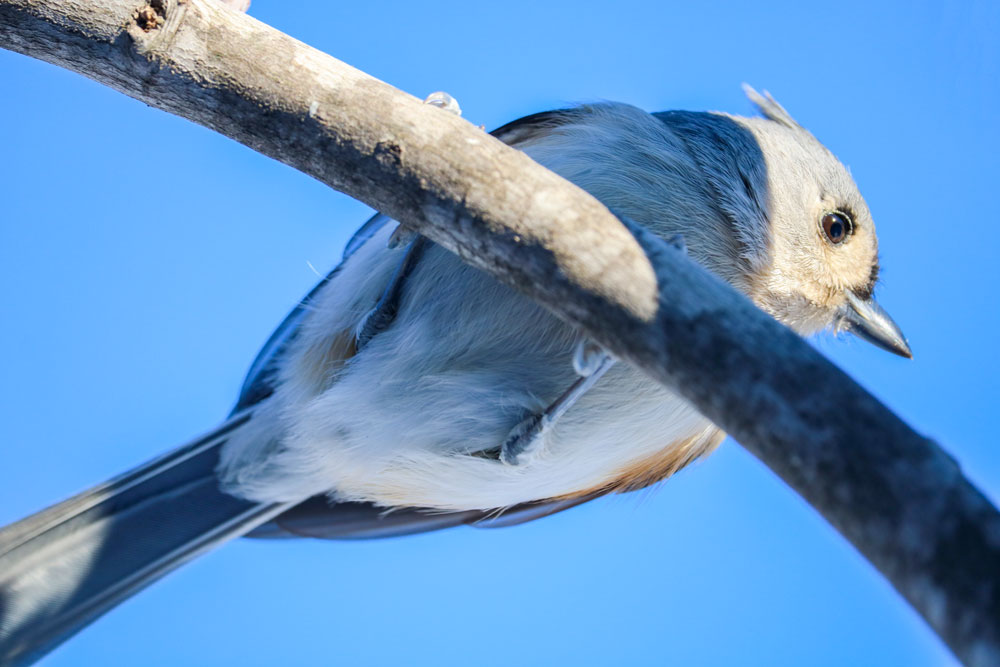
Habitat

Tufted titmice can be found in woodlands, shade trees, gardens, groves, or mixed evergreen-deciduous woods with tall trees, typically in areas with a dense canopy and many tree species. They are also common in orchards, parks, and suburban areas if the trees are large enough. These birds can generally be found at low elevations and are rarely reported at elevations above two-thousand feet.
Diet
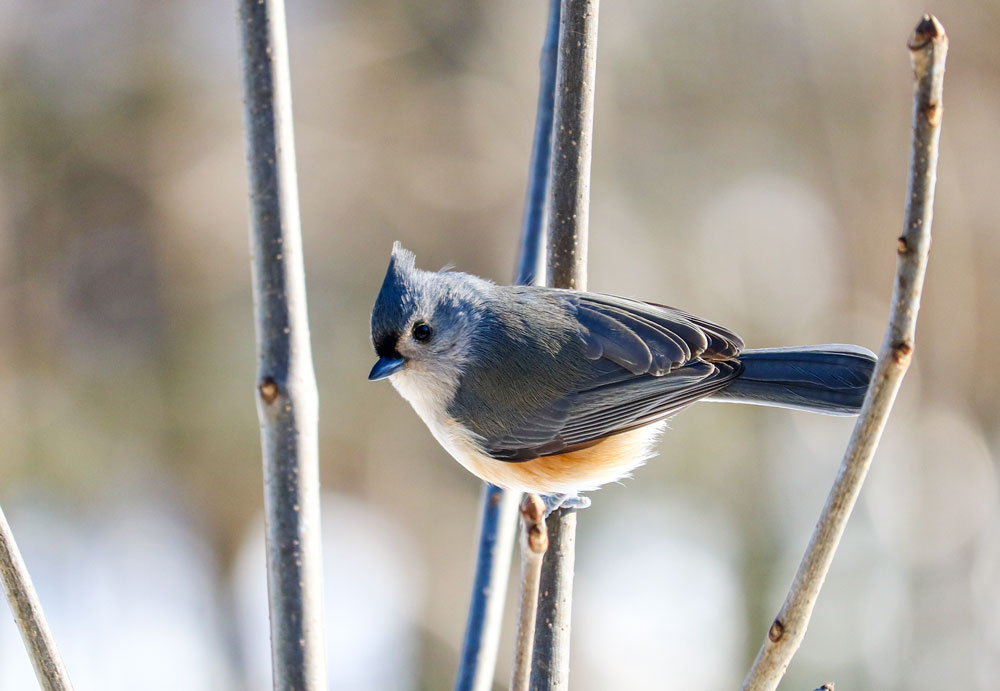
Insects make up close to two-thirds of the annual diet of the tufted titmouse. During the summer, tufted titmice eat mainly insects, including caterpillars, beetles, sawfly larvae, ants, wasps, stink bugs, and treehoppers, as well as spiders and snails. They also eat small fruits, seeds, nuts, and berries, including acorns and beechnuts are important in their diet, especially during the winter.
Similar to the chickadee, titmice do not eat right at the bird feeder. While observing these birds, you will notice that they always choose the largest seeds they can when foraging. While sorting through seeds, they will judge which seeds are optimal in weight and the easiest and therefore guess which ones have the highest fat content. Once they are back in the woods, titmice will hold their seeds between their feet and use its beak to hammer and pry them apart for consumption. Personally, I have observed these birds consume black sunflower seeds at the feeders before flying away. I suppose they feel comfortable enough to consume food at my feeders and have the chance to take more seeds back to enjoy the safety and cover of the woods.
Behavior
Tufted titmice are acrobatic foragers. They often flock with chickadees, nuthatches, and woodpeckers and are regular visitors to feeders, where they can be observed to be more assertive over smaller birds. Their flight tends to be fluttery but level rather than undulating.
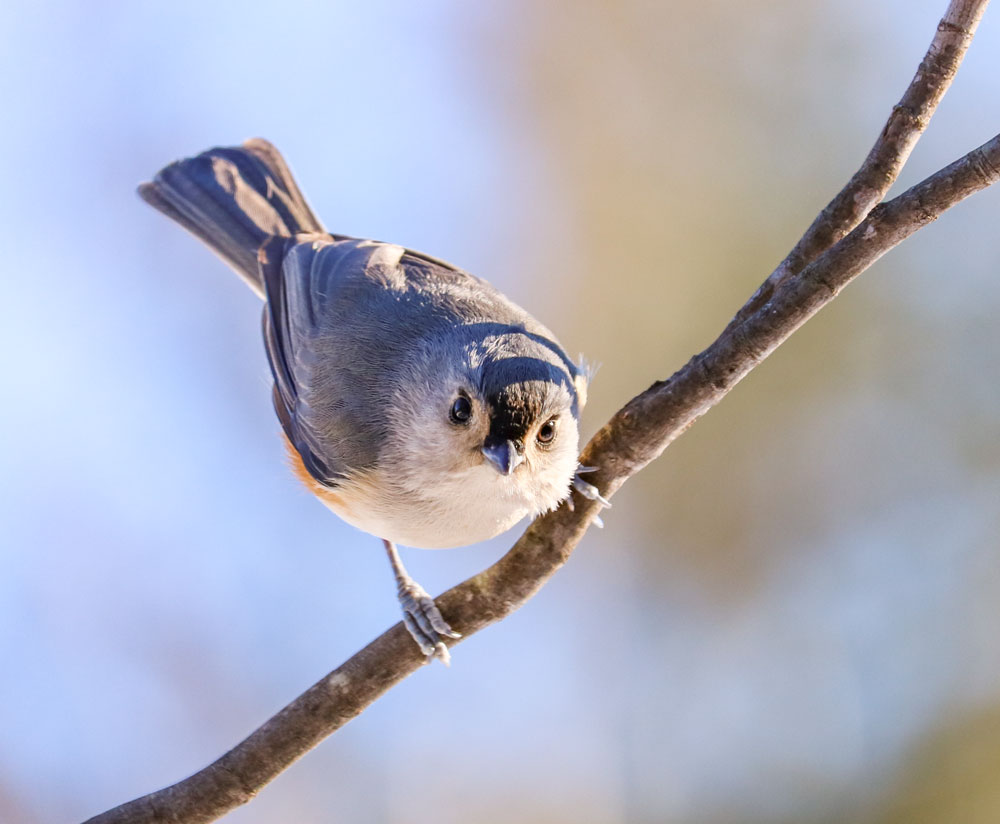
Songs & Calls
The song of the tufted titmouse is a fast-repeated, clear whistle: peter-peter-peter. These birds repeat this up to eleven times in succession or up to an estimated thirty-five songs delivered per minute. Females occasionally sing a quieter version of this song.
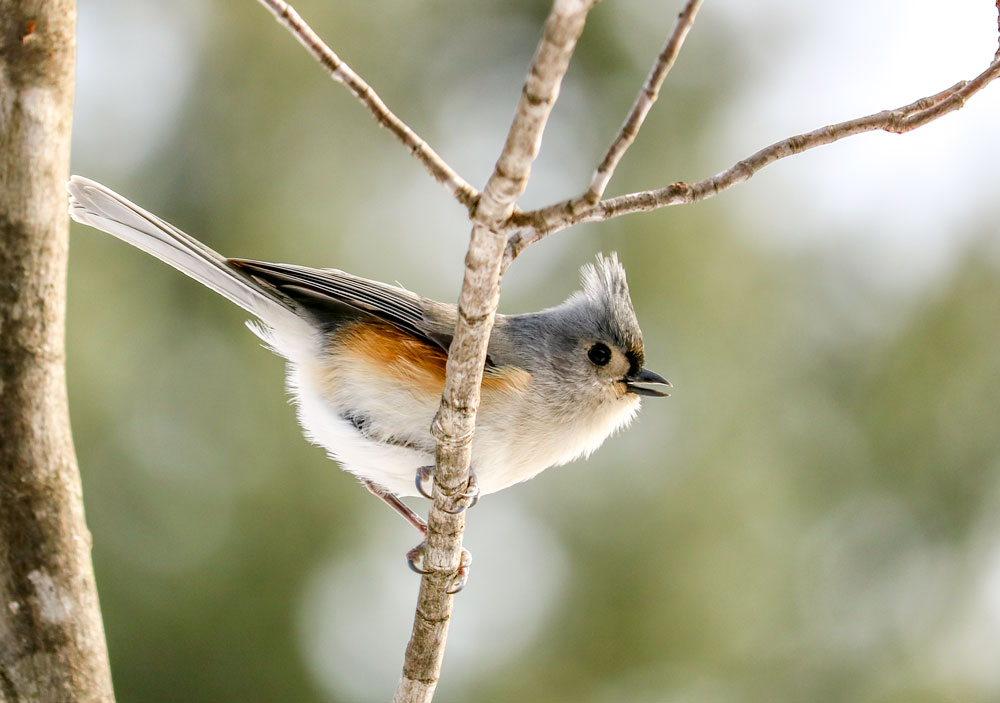
Titmouse calls are both nasal and mechanical. A scratchy, chickadee-like tsee-day-day-day is the most common. They also give fussy, scolding call notes and, when predators are in view, a harsh distress call that warns other titmice of the danger.
Breeding & Nesting
Pairs of titmice may remain together all year, joining small flocks with others in winter. Flocks break up in late winter, and pairs establish nesting territories. The male feeds the female often from the courtship stage until after the eggs hatch. The breeding pair may have a “helper,” one of their offspring from the previous year.
The nest site is in a hole in a tree, either a natural cavity or an old woodpecker hole; averages about thirty-five feet above the ground, ranging from three feet to ninety feet up. Unlike chickadees, they do not excavate their own nest hole. They will also use nest boxes. The nest (probably built by females) has a foundation of grass, moss, leaves, and bark strips, lined with soft materials, especially animal fur. Birds may pluck hair from live woodchucks, dogs, or other animals, even from humans. Now that would be quite an experience. Can you imagine one of these birds plucking your hair? I hope they would ask politely before first!
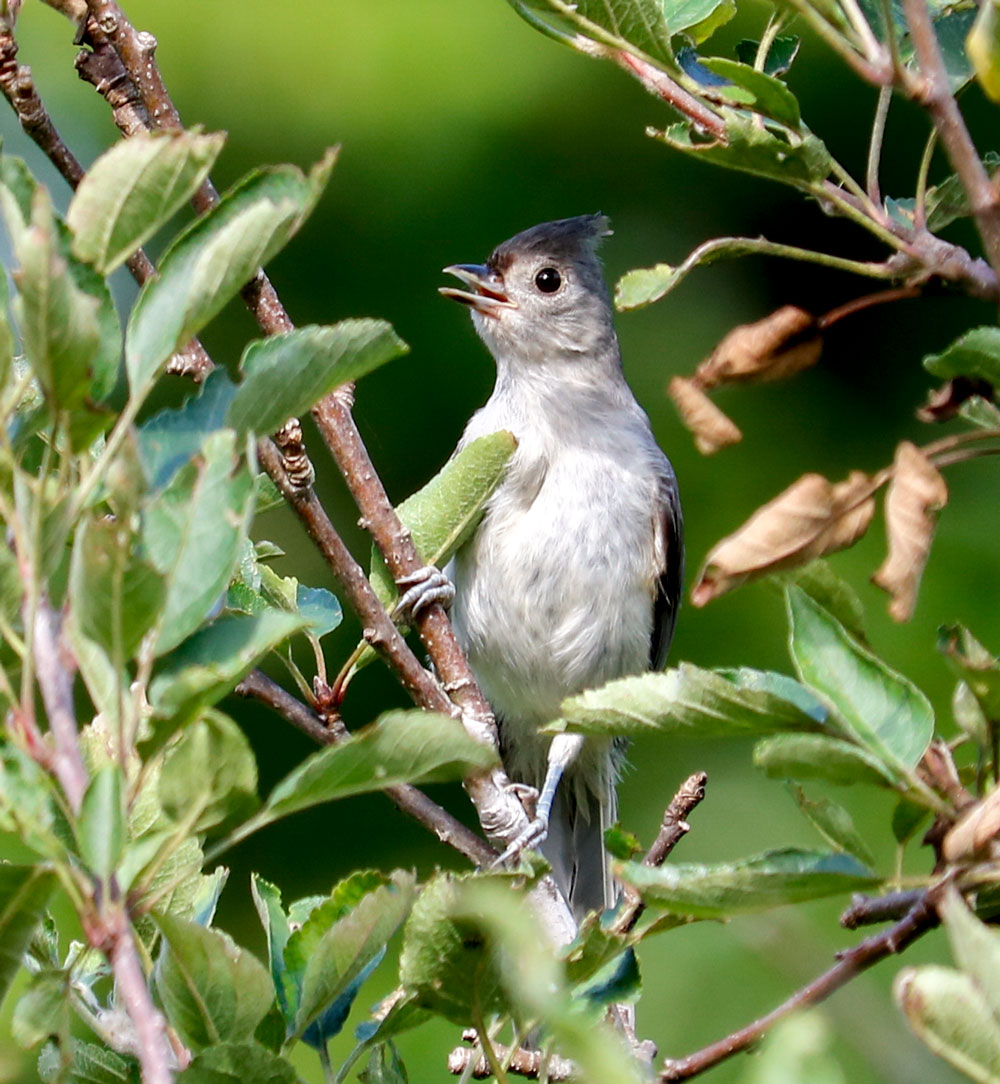
There are five to six, sometimes three to nine eggs. They are white, finely dotted with brown, reddish, or purple. Incubation is done by the female for only twelve to fourteen days. The female stays with the young much of the time at first, while the male brings food; later, the young are fed by both parents, sometimes by an additional helper. Young leave the nest about fifteen to sixteen days after hatching.
Migration
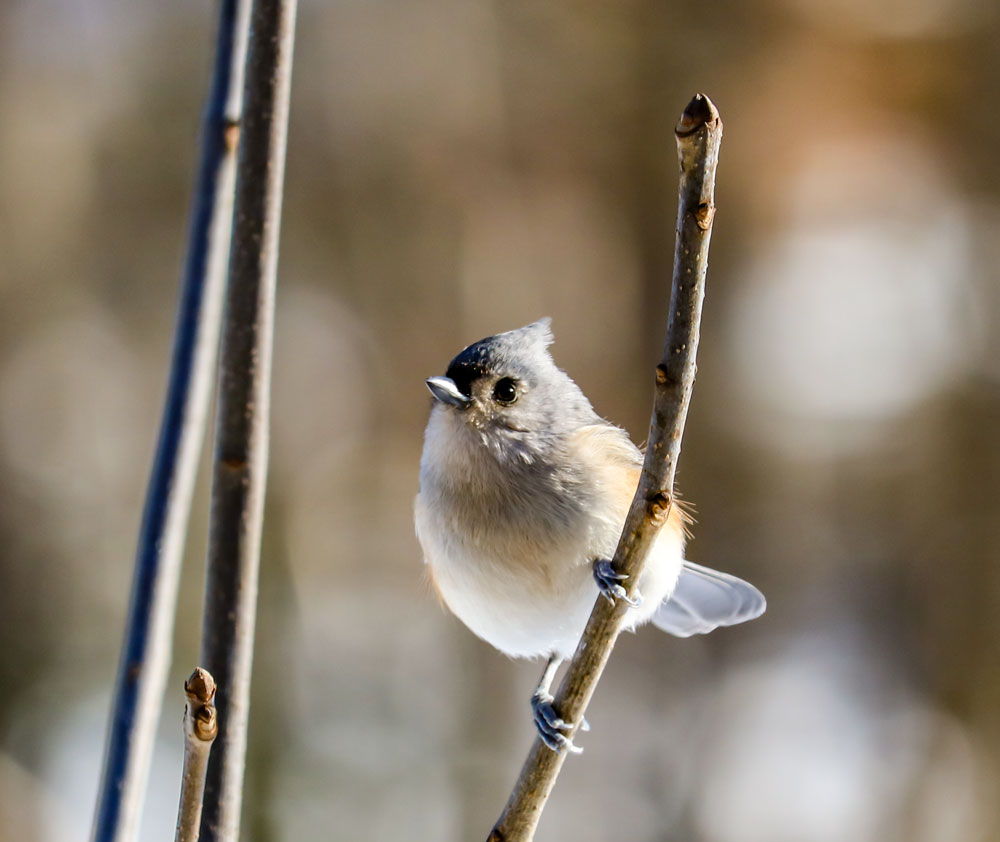
Tufted titmice do not migrate extensively, remaining year-round throughout the winter.
How to Attract Tufted Titmice to Your Backyard
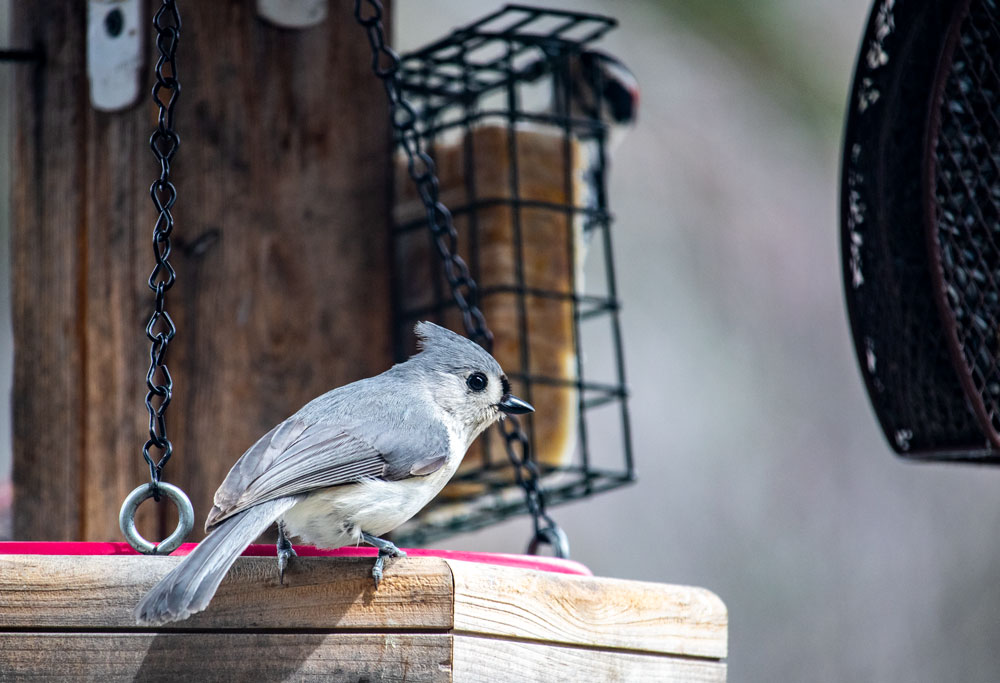
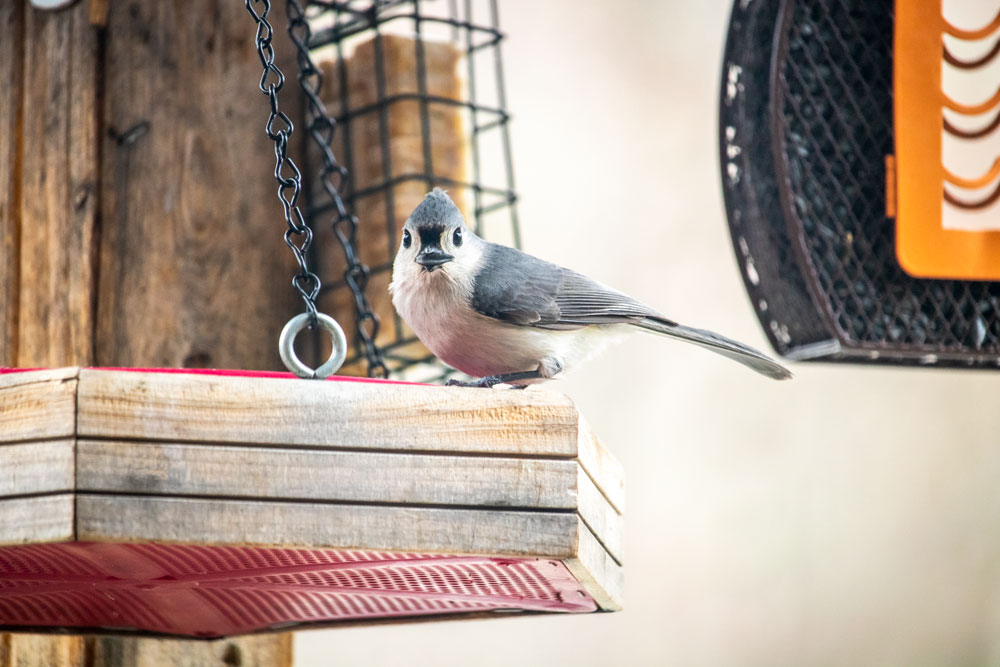
Did You Know?
The tufted Titmouse is a regular visitor at backyard bird feeders, especially during the winter months. These birds prefer sunflower seeds but will eat suet, peanuts, and other seeds as well.
Also, being that tufted titmice are cavity nesters, you can also try putting up nest boxes, as this is a good way to attract breeding titmice to your yard. Make sure to put it up well before breeding season. You can also attach a guard to make ensure predators don’t raid eggs and young.
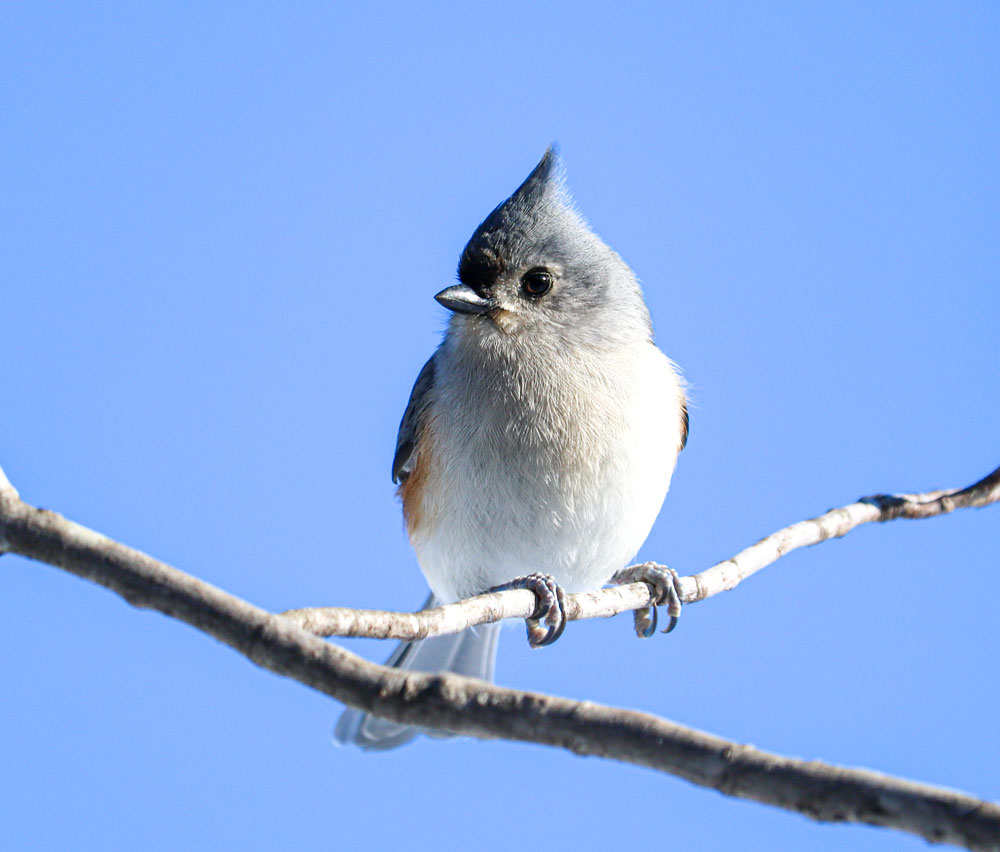
Thank you for reading and I hope you enjoyed learning about the tufted titmouse. If you have anything to share, such as your photographs and experiences with these adorable songbirds, please feel free to leave a comment below. I would love to hear from you.
Resources used for this post:
allaboutbirds.org & audubon.org
Leave a Reply